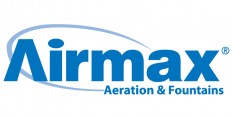
Koi have lived with parasites and other pathogens since the time of their origin. Koi in a well maintained pond can live in a natural coexistence with parasites.
Remember, the goal is not to annihilate your Koi with every known medicine. A panic approach to disease control usually kills the parasites and the Koi.
When Koi scratch or act odd do not immediately dump chemicals in their home. Use the process of elimination we discuss below and treat for specific problems. Calm down and use common sense; give the Koi some time to recover from mild problems with improved water quality and filtration. Just like a dog or cat who has fleas we do not over kill the situation. Over kill can cause bigger problems down the line. Prevention is the key. Good water quality and fewer fish tend to be a more suitable approach to prevention. Take care of your water and filtration the water will take care of the Koi.
If we observe abnormal Koi behavior we must look into the possible cause. Abnormal behavior may be the result:
- Stress factor
- Specific disease organism.
The Koi's symptoms are a generic reaction. The symptoms are not a conclusive indication of disease. We must first understand and alleviate the cause of the stress before we can successfully treat any disease organisms. Let's consider the process of alleviation.
We can begin by testing the pond water and environment first.
- Test for oxygen. Results should be above 5 PPM, preferably 8ppm or higher.
- Test for ammonia and nitrite. These tests should read zero.
- Test the pH. A range between 7.0 and 8.8 is acceptable. However, daily fluctuations of more than 0.2 are stressful. A stable pH is important.
- Test for Nitrate. Concentrations from zero to 200 PPM are acceptable but should normally be below 100ppm.
Careful consideration should be given to your filter system and your pond maintenance.
- Check the pond for obvious dirt and organic matter. Dirty ponds consume too much oxygen and are a breeding ground for pathogens.
- Check for temperature changes. Have the Koi recently been exposed to temperature changes of more than 5°F? Thermally stressed Koi take time to recover their full strength and may fall prey to pathogens during recovery.
Check for chlorine.
- Chlorine and Chloramine are added by the city water companies to disinfect tap water. Untreated tap water will kill your Koi very quickly if not neutralized. Be sure to use a proper tap water conditioner on all new tap water going into the pond.
Do not allow any runoff from your garden to enter the pond.
- Insecticides
- Fertilizers are extremely toxic and should be used cautiously around the pond.
Have new Koi been recently added?
- New Koi will be weak and may need time to adjust.
- New Koi can initiate disease outbreaks.
- New Koi can have parasites which may spread to the others.
- Adding new Koi may require preventive treatments or quarantine.




.png)
